-
CATEGORY ::
- All Seeds /
- All Flower Seeds /
- All African Daisy Seeds
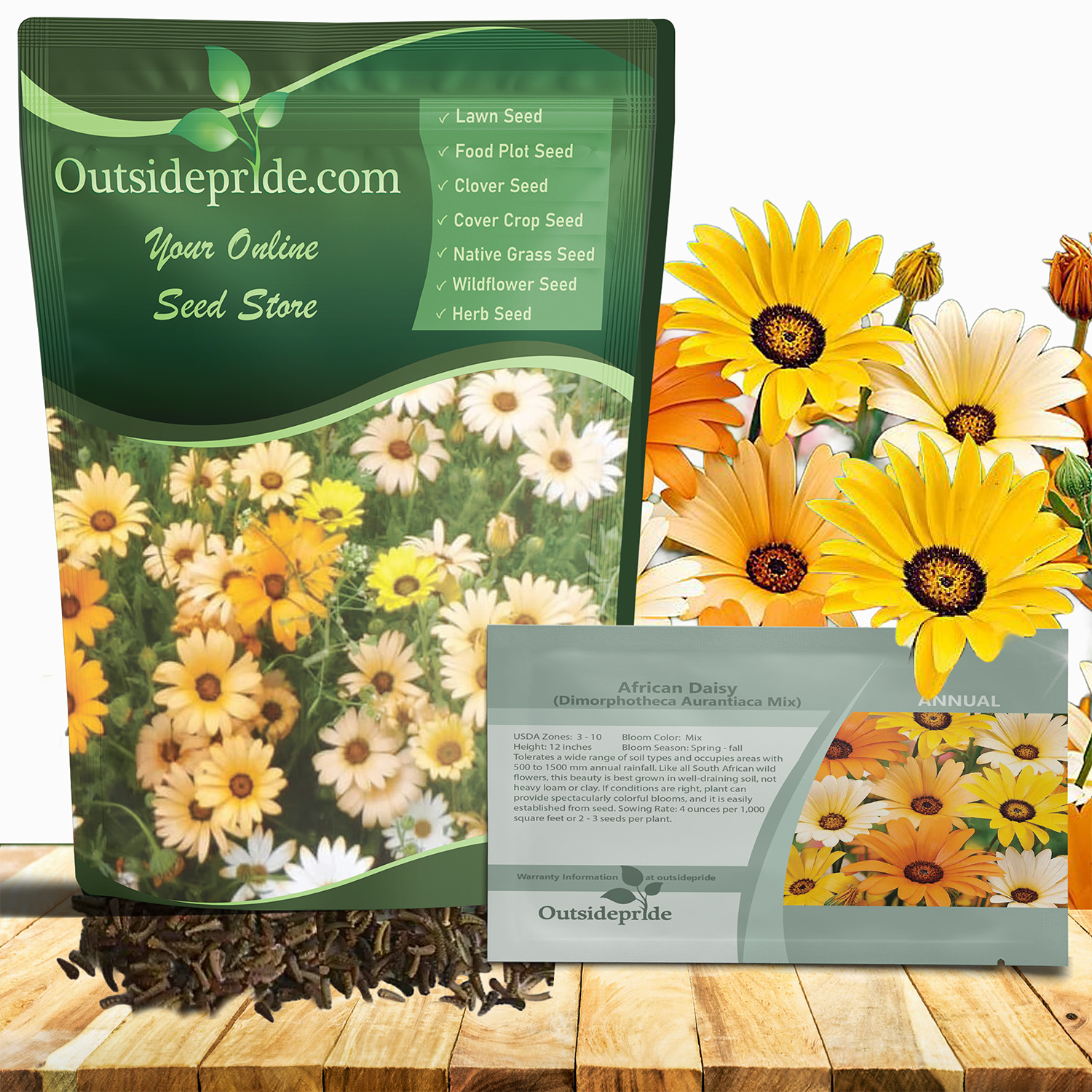

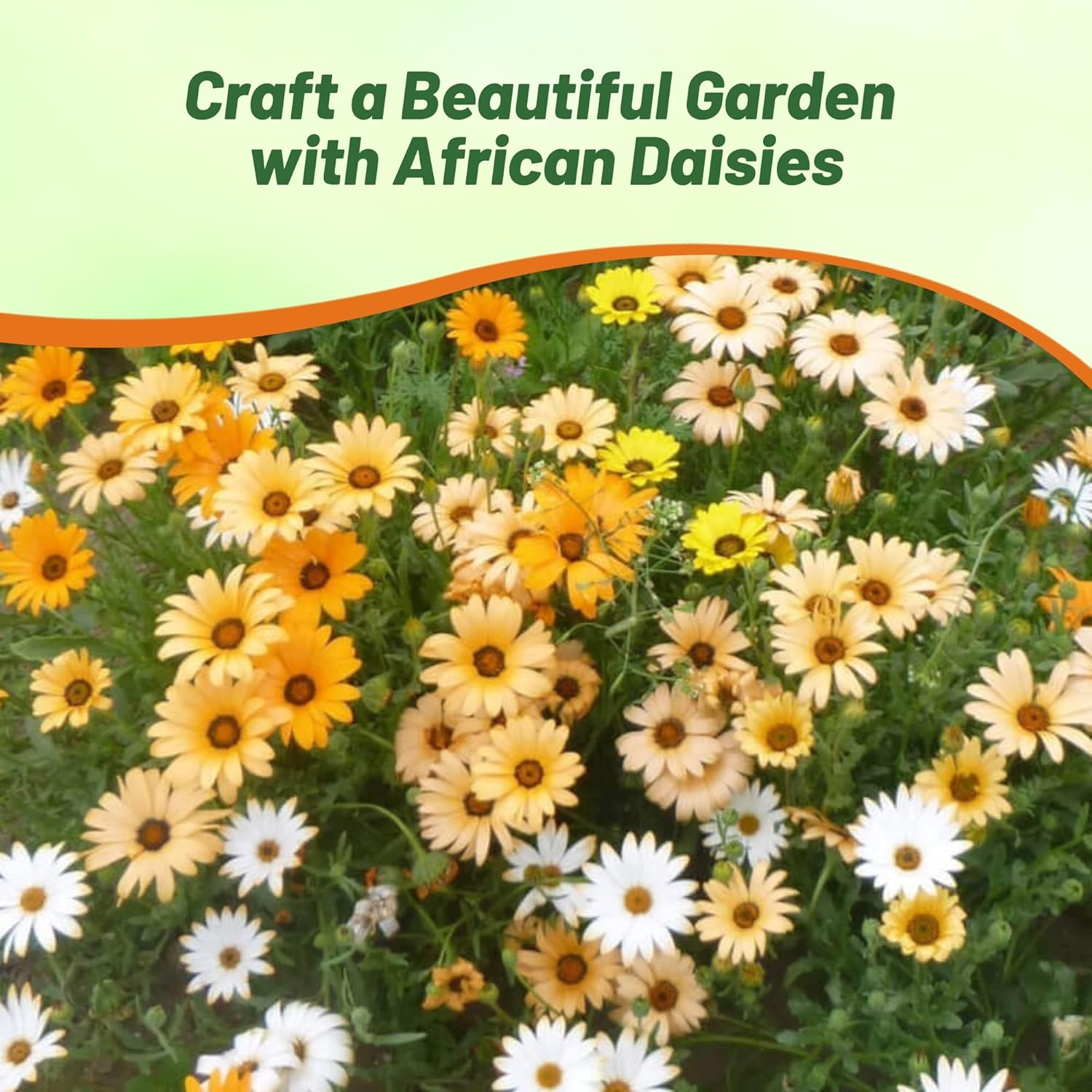
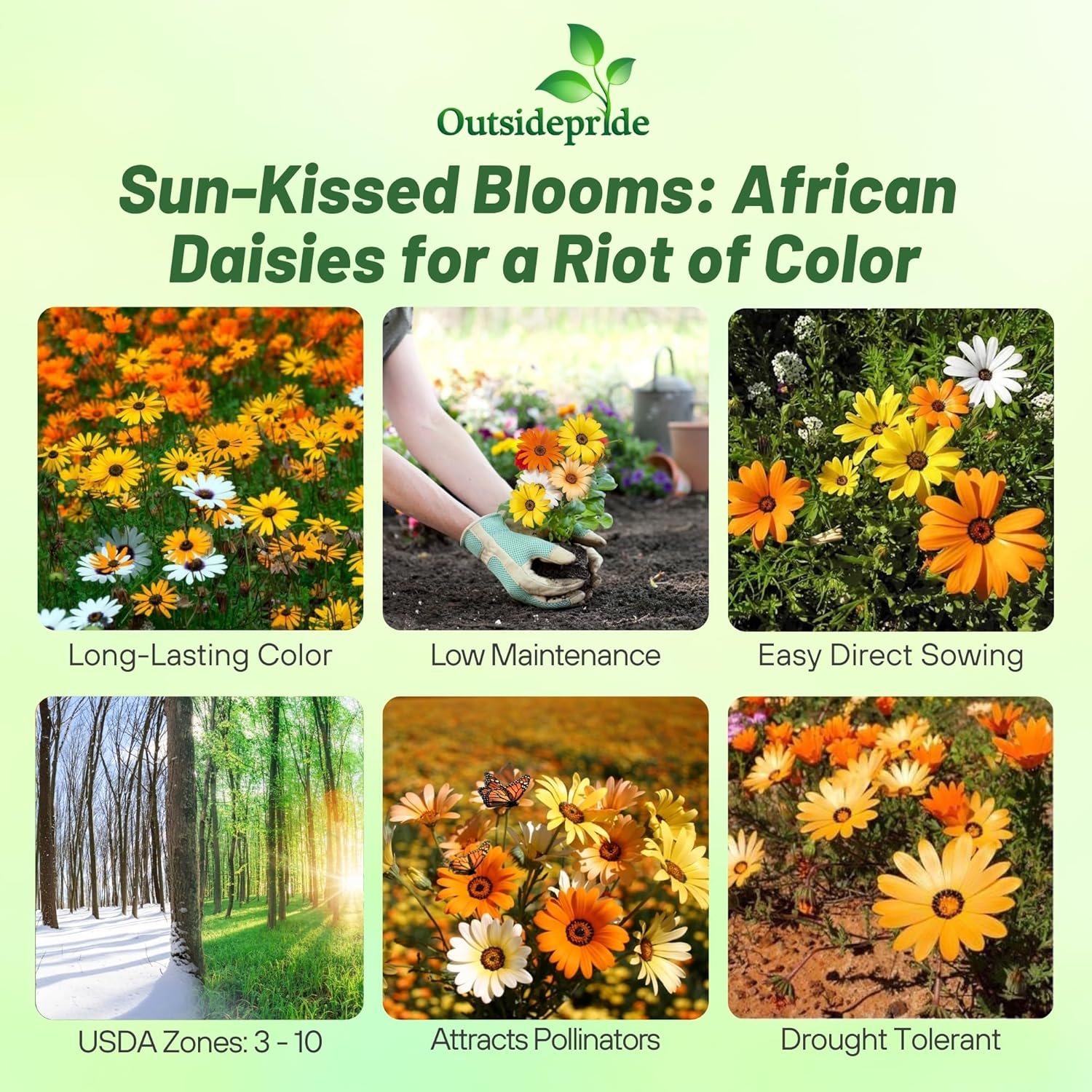
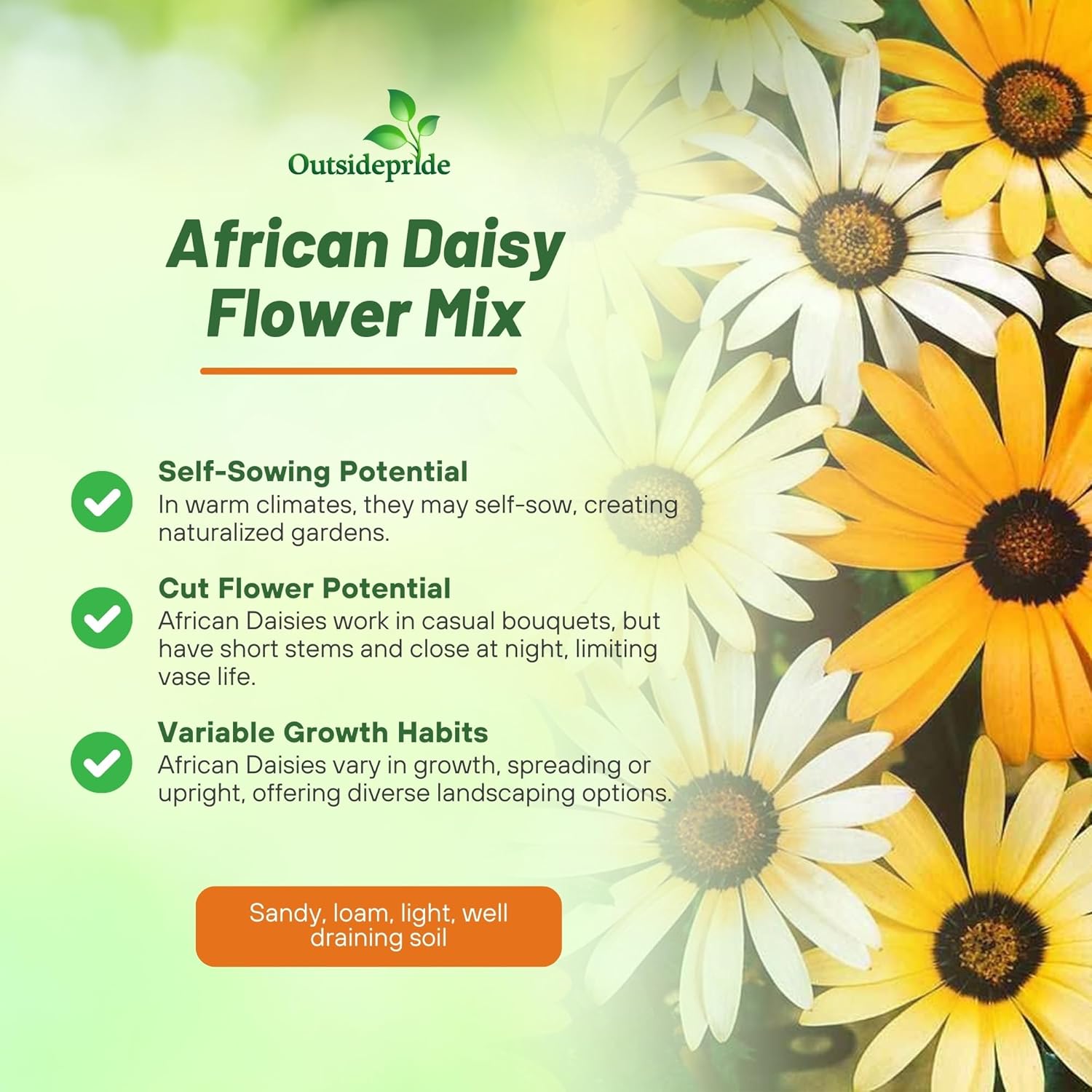
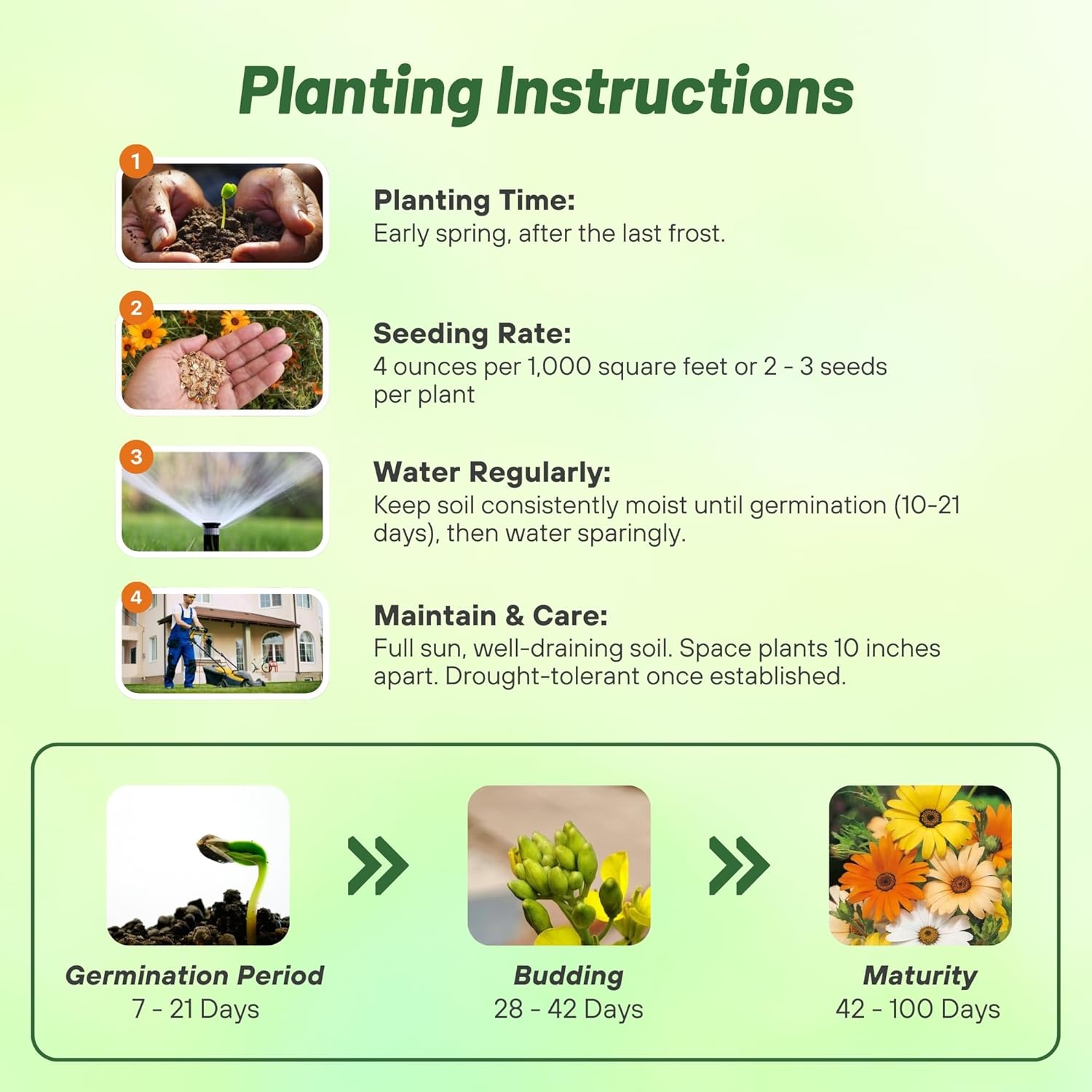
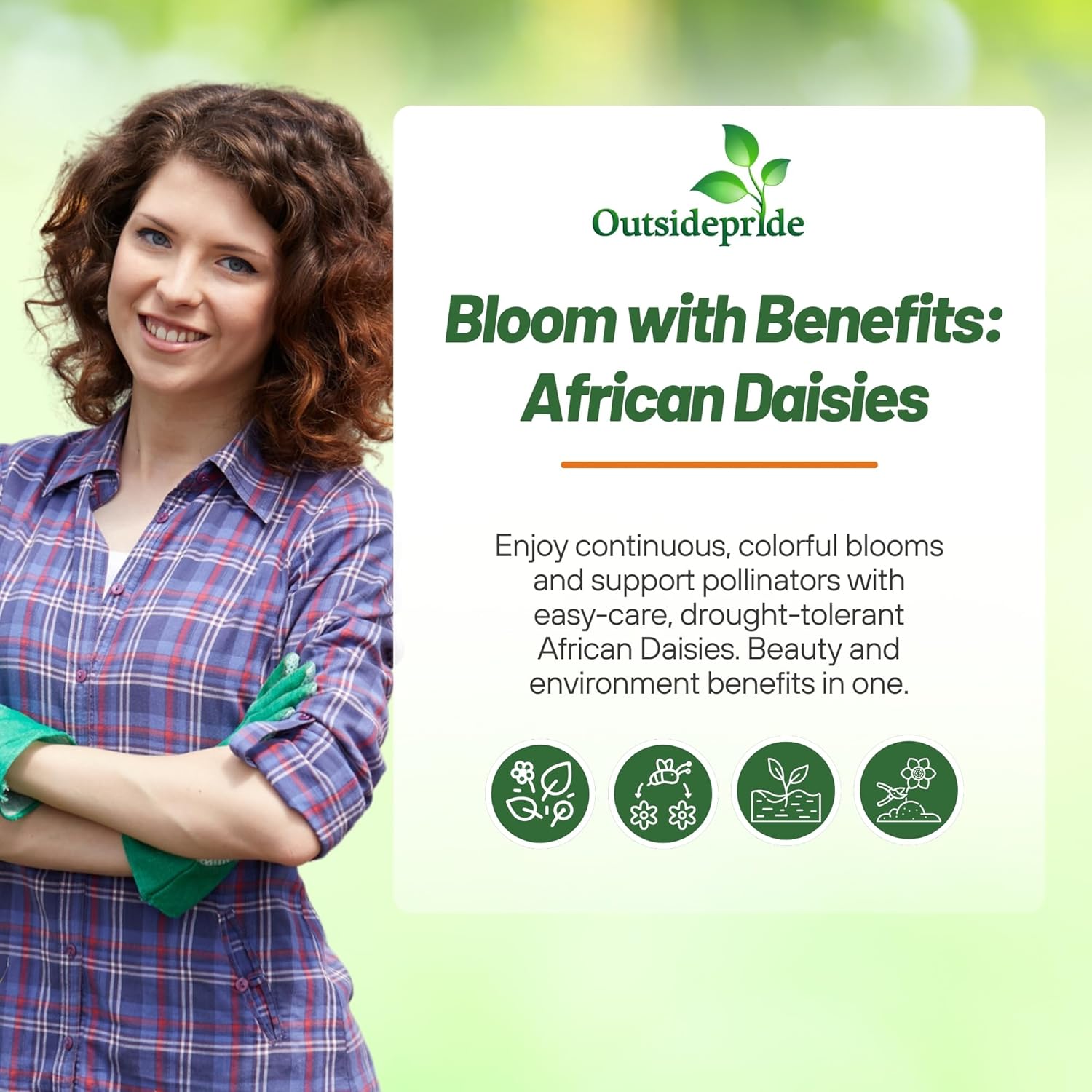
African Daisy Seeds - Mix
About...
African Daisy (Dimorphotheca Aurantiaca Mix) - African Daisy tolerates a wide range of soil types and occupies areas with as littls as 20 inches of rainfall a year making it very drought tolerant. Like all South African wildflowers, this beauty is best grown in well-draining soil, not heavy loam or clay.
MORE AFRICAN DAISY OPTIONS
Planting Directions
TEMPERATURE
60F - 70F
AVERAGE GERM TIME
10 - 21 days
LIGHT REQUIRED
Yes
DEPTH
1/16 inch
SOWING RATE
4 ounces per 1,000 square feet or 2 - 3 seeds per plant
MOISTURE
Keep seeds moist until germination
PLANT SPACING
10 inches
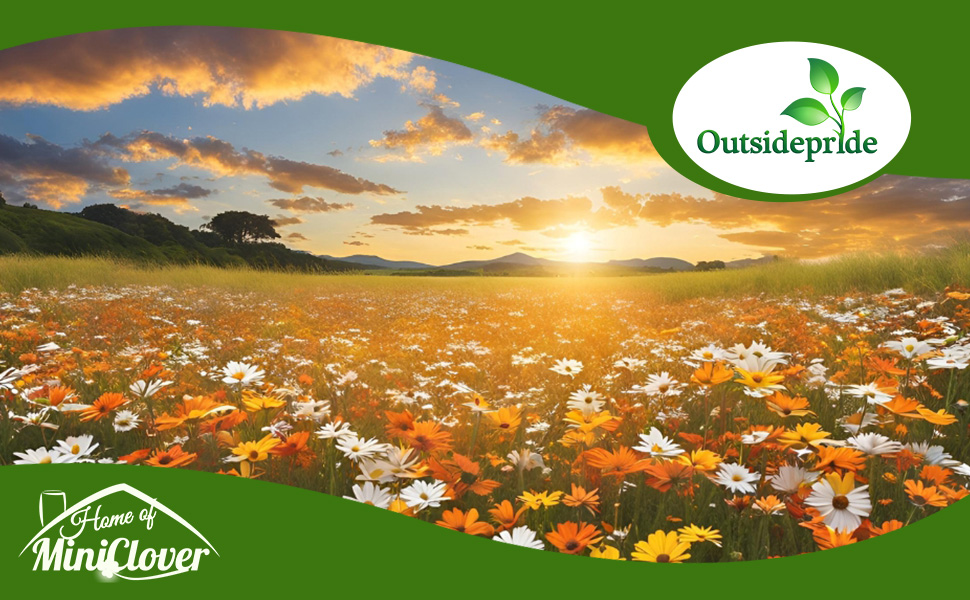

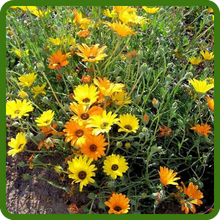
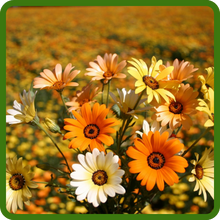
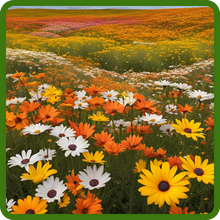
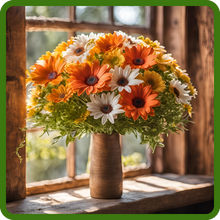
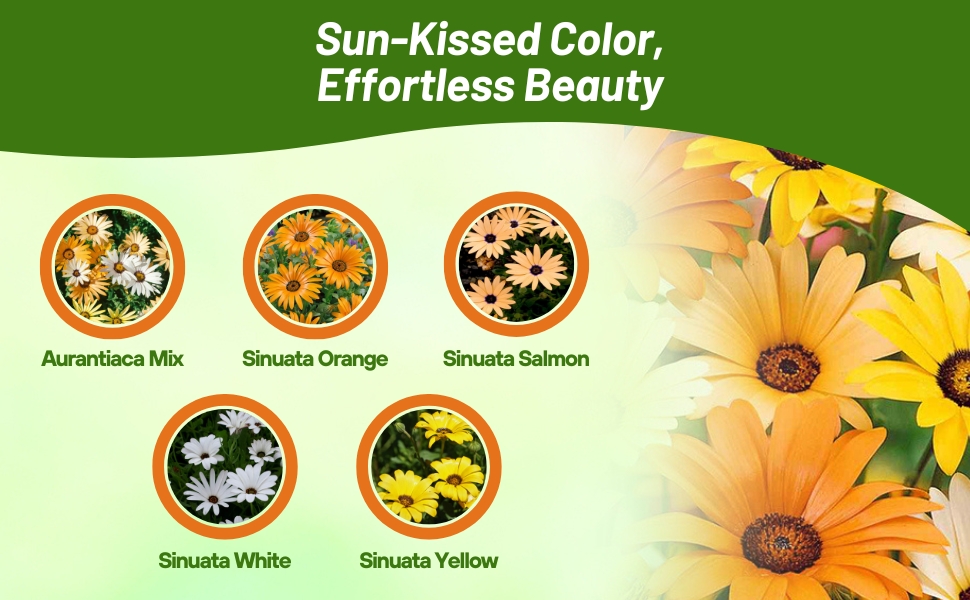

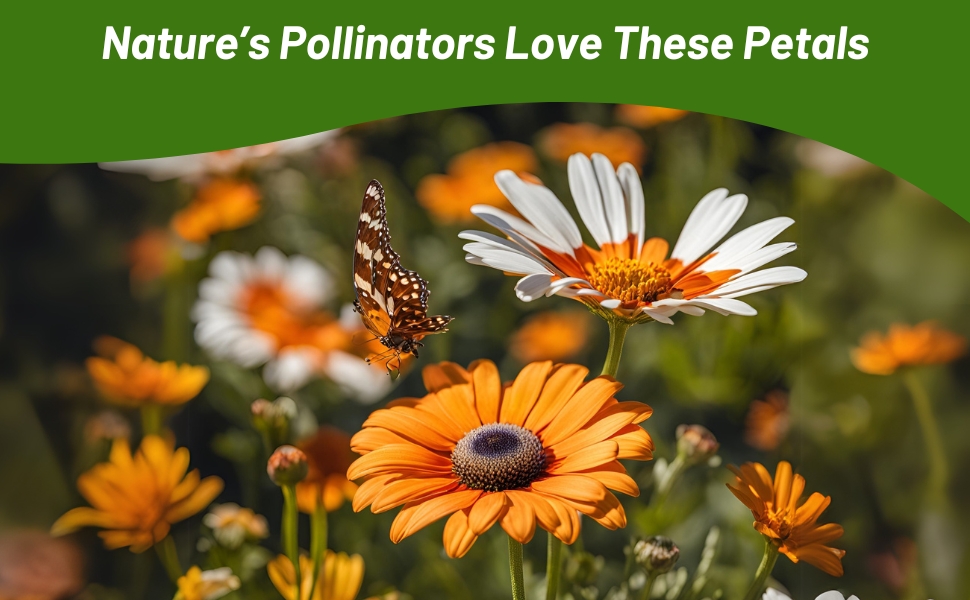
African Daisy (Dimorphotheca Aurantiaca Mix) - African Daisy tolerates a wide range of soil types and occupies areas with 20 inches of rainfall a year making it very drought tolerant. Like all South African wild flowers, this beauty is best grown in well-draining soil, not heavy loam or clay. If conditions are right, the African Daisy plant can provide spectacularly colorful blooms, and it is easily established from wild flower seed.
The African Daisy flowers are 1 - 1/2 inch wide flowers, which close at night, in the shade, and during cloud cover. The African Daisy colors are in shades of white, orange, yellow and apricot. The are known for attracting butterflies and bees to gardens. Spectacular results can come from directly sowing African Daisy seeds directly into prepared areas.
- African Daisies need full sun and a light dry soil.
- African Daisy wild flower seed can be sown in spring after frosts.
- Keep wild flower seed moist until germination. After estabslihment, they are drought tolerant.
- Sow the seeds about 4 inches apart in the soil.
- Add a low nitrogen fertilizer to the African Daisy plant once a month.
- African Daisies do not transplant well so plant the flower seed where you want them to grow.
African Daisy care:
- Remove old and spent leaves to prevent fungus infections.
- When re-potting see that the crown of the plant is above the level of the soil.
- Generally, African Daisies do not need insecticides or fungicides.
- If a problem arises treat them with an insecticidal soap and /or fungicide.
- Mulching is done around but not on top of the plants with 3 inches of organic compost.
- Water the African Daisy wild flowers well weekly until soil is completely moist.
Common Questions
Are African Daisies Perennial?
Whether African daisies return every year depends on the location where they are planted. In USDA hardiness zones 10-11, African daisies can grow as perennials, coming back each year. However, in colder regions falling within USDA hardiness zones 9 or lower, African daisies need to be planted annually, requiring replanting each year.
Do African daisies bloom all summer?
If planted in cooler summer environments, yes, African daises will bloom from spring to the next frost. If grown in a place that has very hot summers, African daises will only bloom from late spring until early summer, completely stopping their growth once the weather becomes hot and dry.
Planting Directions
TEMPERATURE
60 - 70F
AVERAGE GERM TIME
10 - 21 days
LIGHT REQUIRED
Yes
DEPTH
1/16 inch
SOWING RATE
4 ounces per 1,000 square feet or 2 - 3 seeds per plant
MOISTURE
Keep seeds moist until germination
PLANT SPACING
10 inches
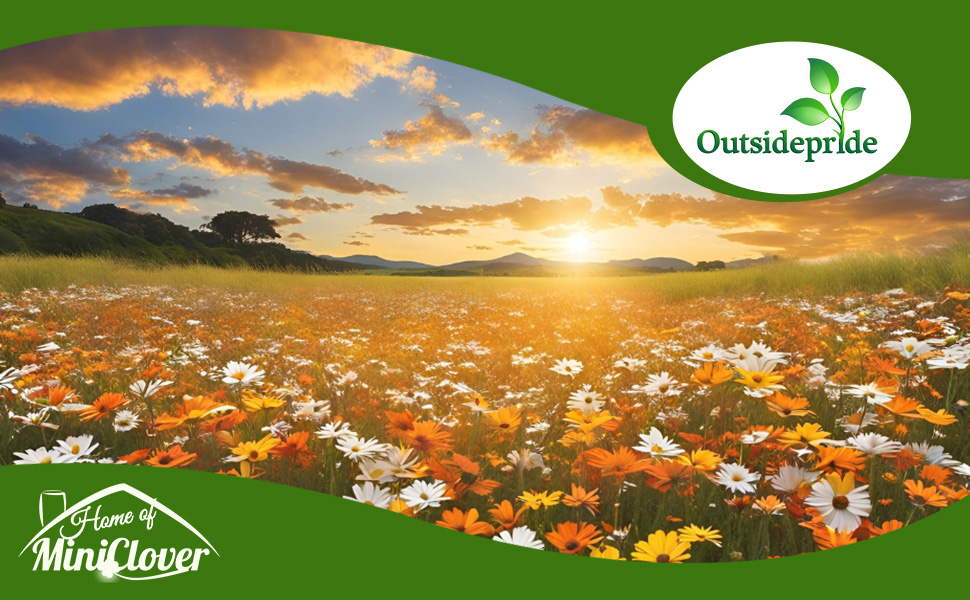

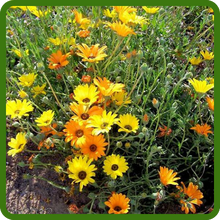
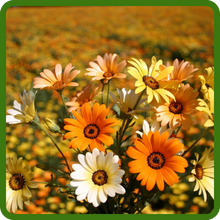

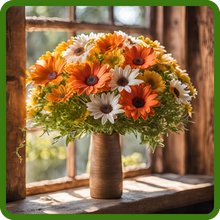
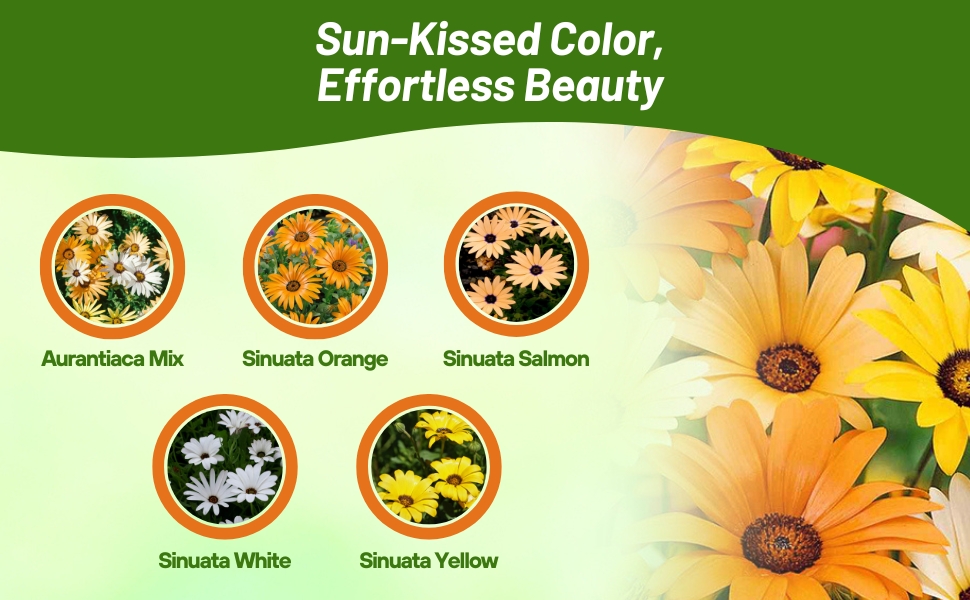
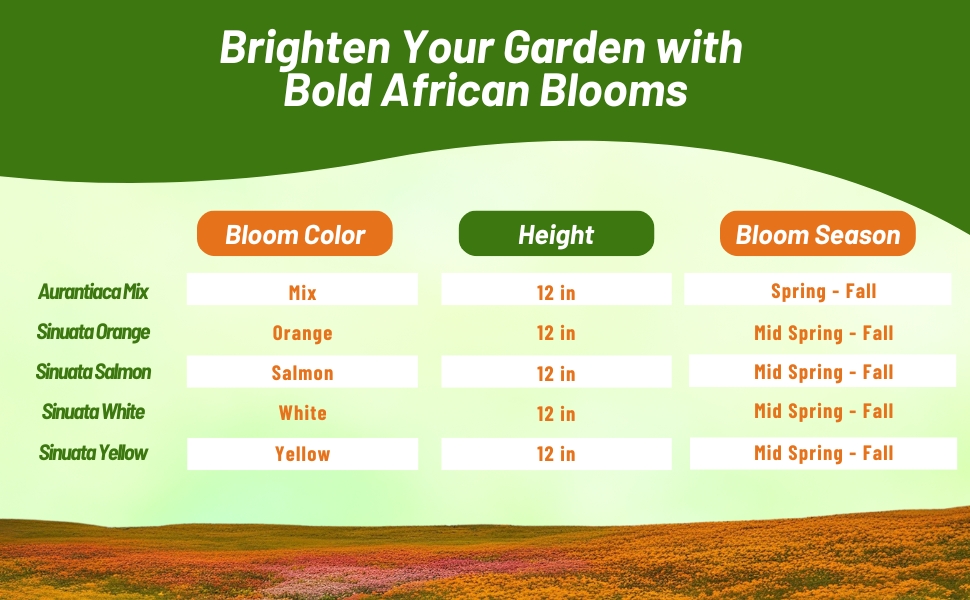
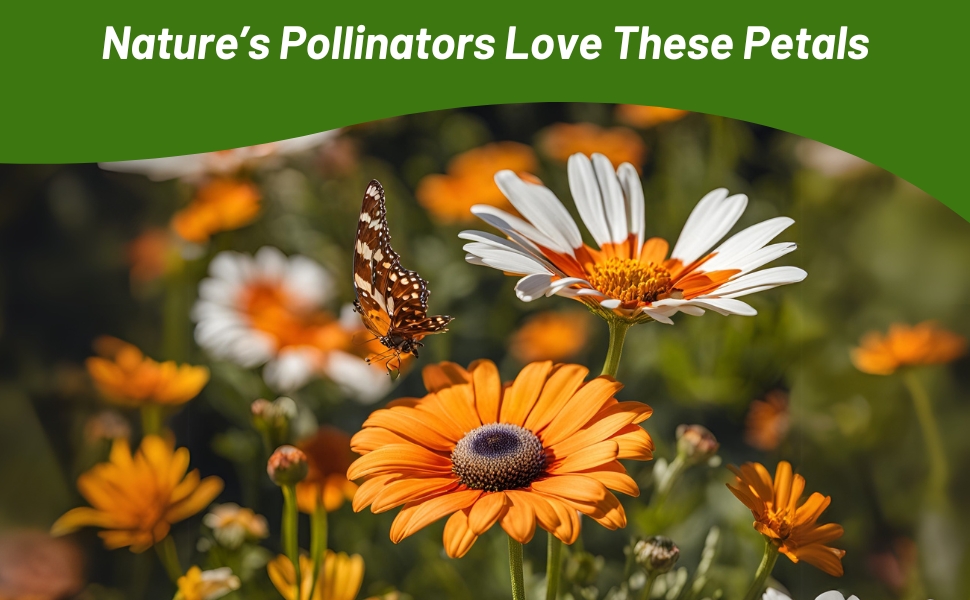
African Daisy (Dimorphotheca Sinuata Orange) - African Daisies are one of the loveliest garden flowers. Outsidepride carries several colors including: shades of orange, yellow, salmon and a mix of beautiful colors. The striking daisy-shaped flowers attract butterflies into the garden. Bees also love this flowering plant as they collect the nectar from the flowers. African Daisies are both deer and rabbit resistant.
Common Questions
Are African Daisies Perennial?
Whether African daisies return every year depends on the location where they are planted. In USDA hardiness zones 10-11, African daisies can grow as perennials, coming back each year. However, in colder regions falling within USDA hardiness zones 9 or lower, African daisies need to be planted annually, requiring replanting each year.
Do African daisies bloom all summer?
If planted in cooler summer environments, yes, African daises will bloom from spring to the next frost. If grown in a place that has very hot summers, African daises will only bloom from late spring until early summer, completely stopping their growth once the weather becomes hot and dry.
Planting Directions
TEMPERATURE
60 - 70F
AVERAGE GERM TIME
10 - 21 days
LIGHT REQUIRED
Yes
DEPTH
1/16 inch
SOWING RATE
4 ounces per 1,000 square feet or 2 - 3 seeds per plant
MOISTURE
Keep seeds moist until germination
PLANT SPACING
10 inches
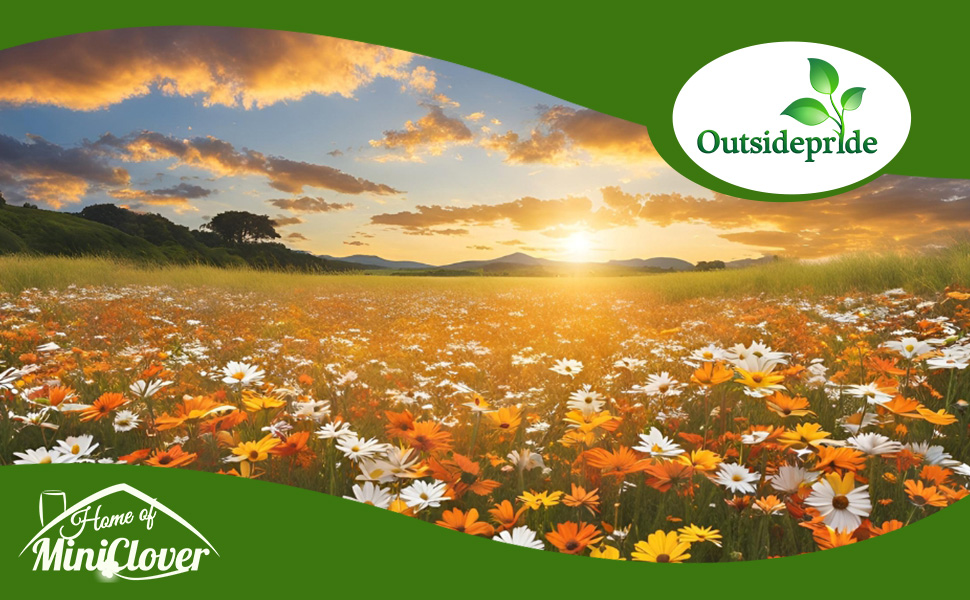

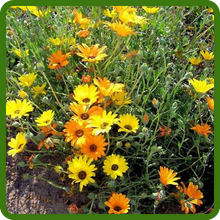
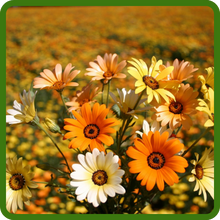
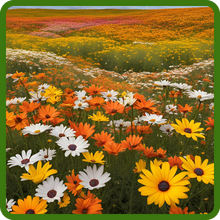
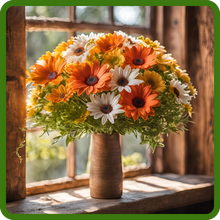
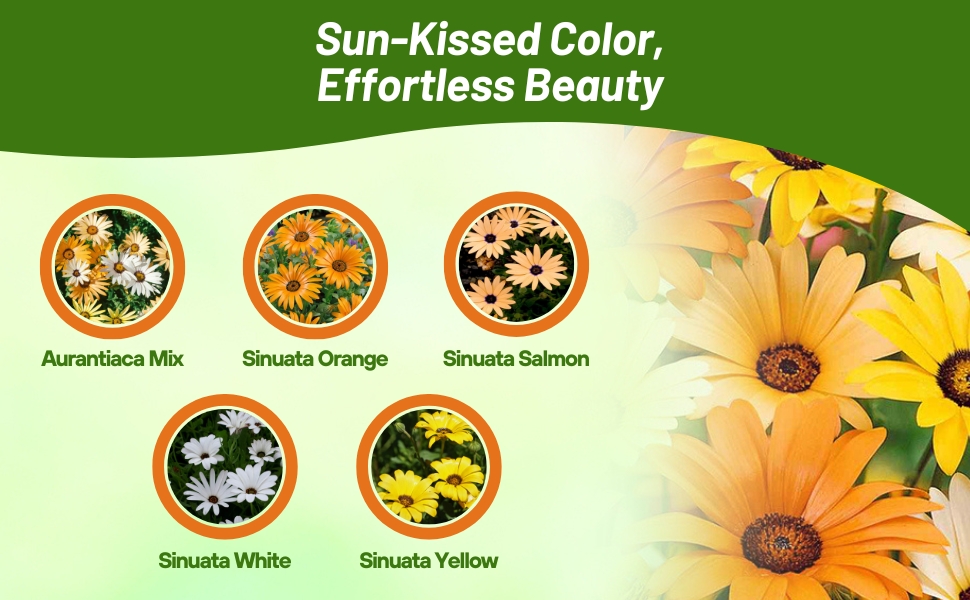
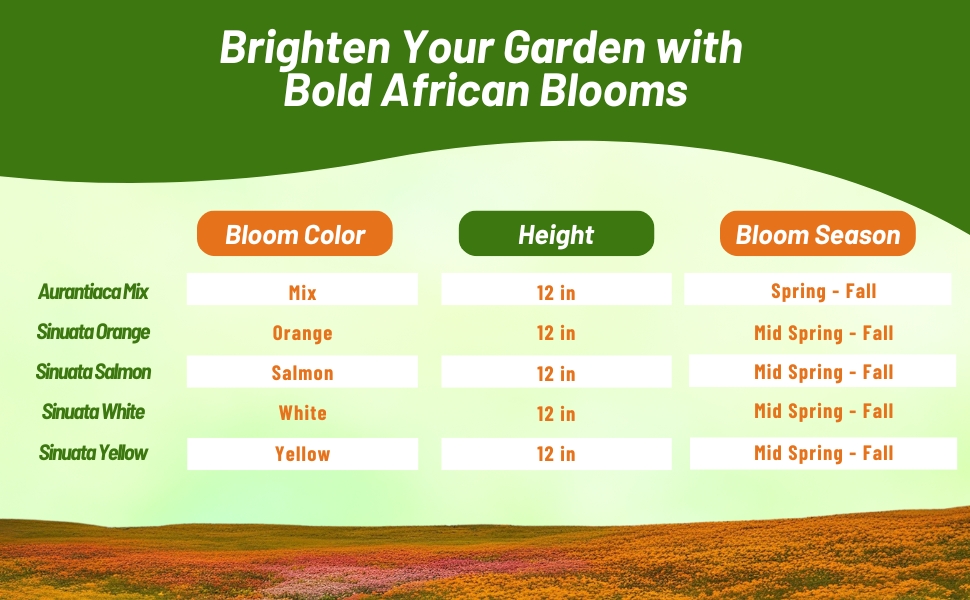
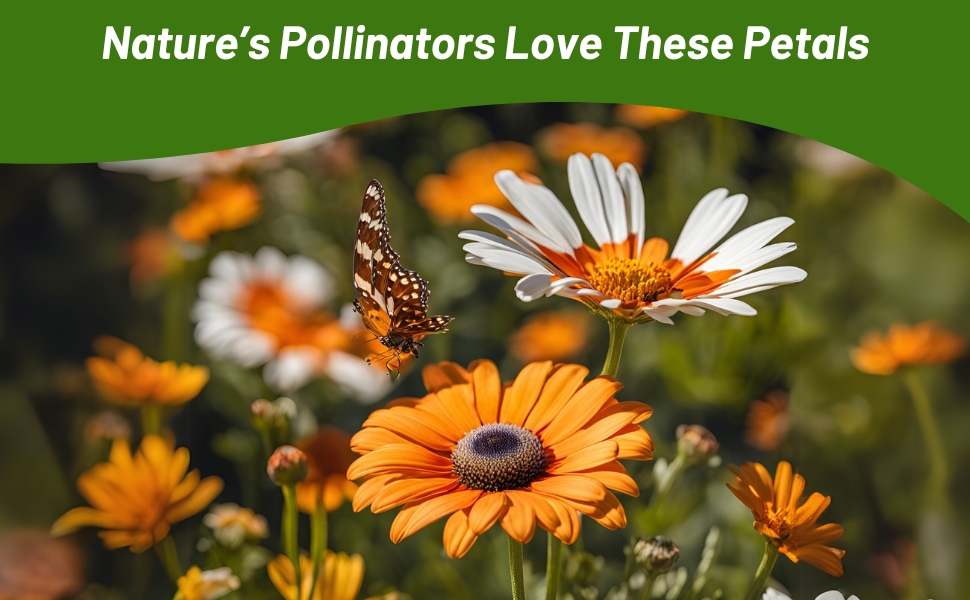
African Daisy (Dimorphotheca Sinuata Salmon) - The flower color is called salmon, but it also has shades of apricot. These beautiful flowers are open by day and close at night. They are spreading plants which thrive in hot, dry areas, making this a western favorite. They grow easily from flower seeds, and they are excellent as a border or ground cover. Plant this flower seed in early spring in containers if you plan on transplanting (late fall or early winter in mildest climates). If you desire to plant African Daisy seeds directly outdoors, sow seeds directly on the ground in mid spring when the climate has warmed up and the threat of frost has passed.
Common Questions
Are African Daisies Perennial?
Whether African daisies return every year depends on the location where they are planted. In USDA hardiness zones 10-11, African daisies can grow as perennials, coming back each year. However, in colder regions falling within USDA hardiness zones 9 or lower, African daisies need to be planted annually, requiring replanting each year.
Do African daisies bloom all summer?
If planted in cooler summer environments, yes, African daises will bloom from spring to the next frost. If grown in a place that has very hot summers, African daises will only bloom from late spring until early summer, completely stopping their growth once the weather becomes hot and dry.
Planting Directions
TEMPERATURE
60 - 70F
AVERAGE GERM TIME
10 - 21 days
LIGHT REQUIRED
Yes
DEPTH
1/16 inch
SOWING RATE
4 ounces per 1,000 square feet or 2 - 3 seeds per plant
MOISTURE
Keep seeds moist until germination
PLANT SPACING
10 inches
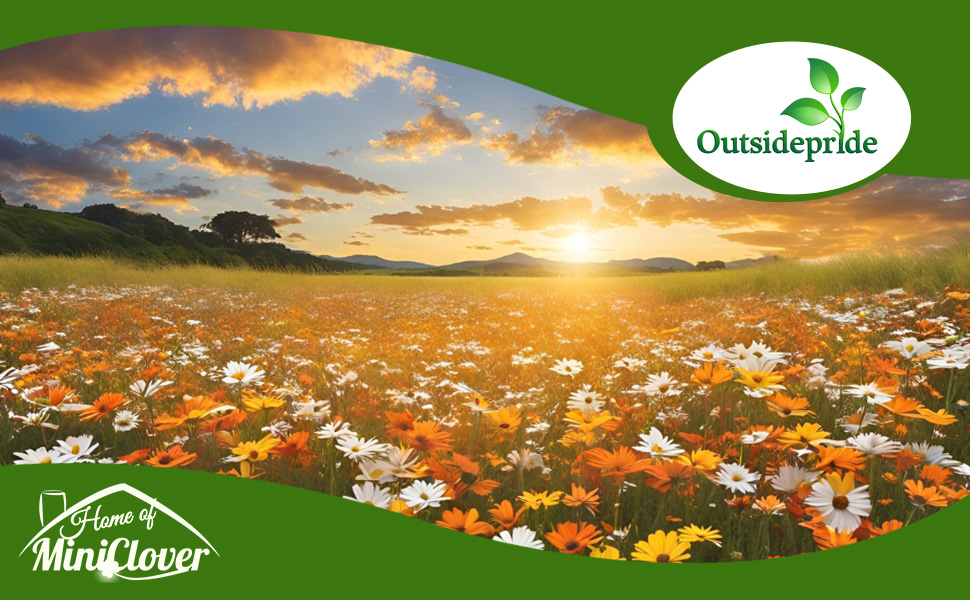

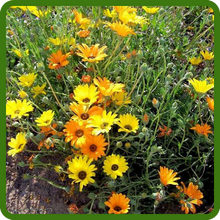
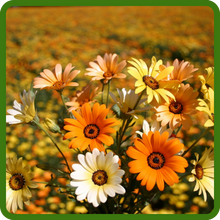
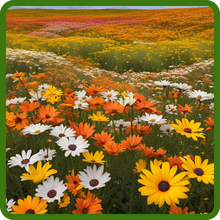
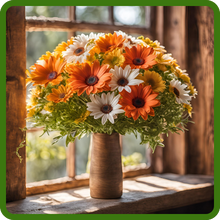
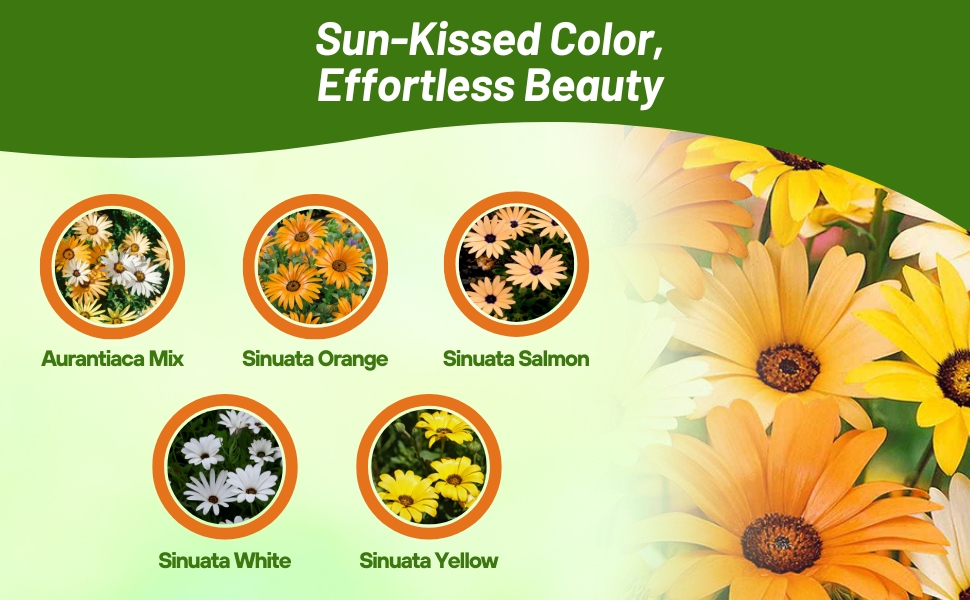
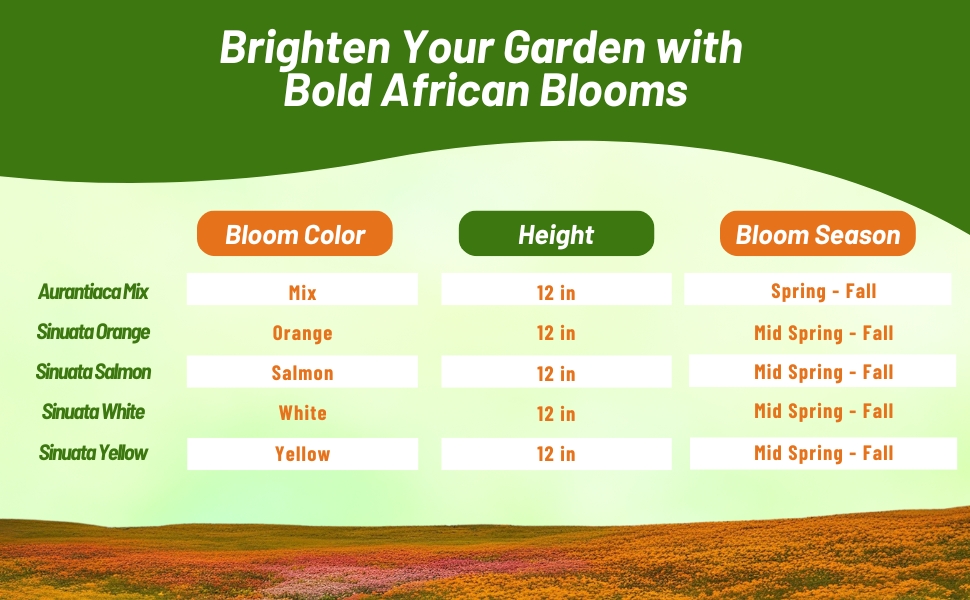
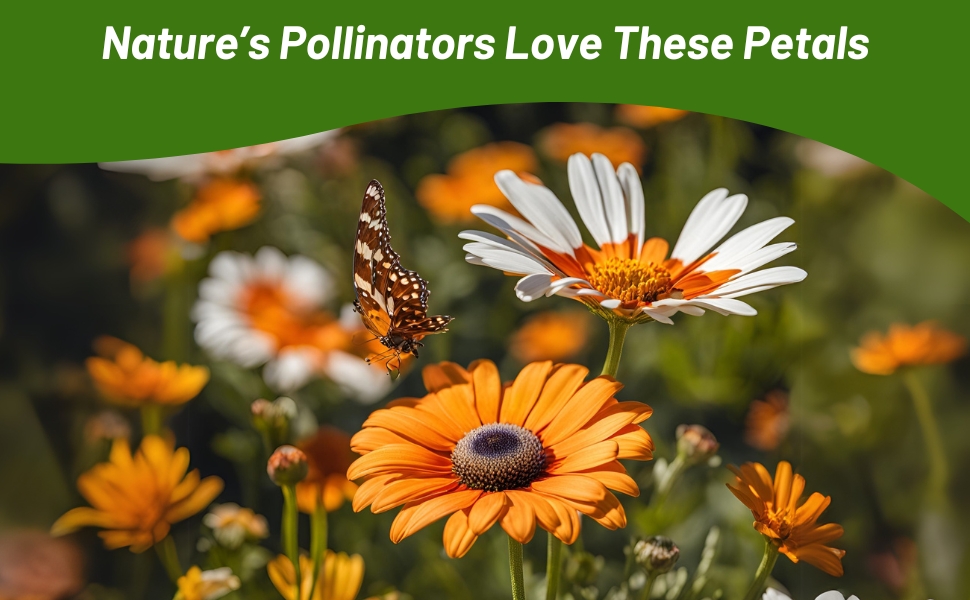
African Daisy (Dimorphotheca Sinuata White) - This flower is an annual with beautiful white daisy-like flowers. It can easily be grown from flowers seeds, and it prefers well-drained soil and will do best in full sun. Many people refer to this flower as Cape Marigold. The flowering plant is perfect for the home garden and is easily grown directly outdoors from flower seed.
Common Questions
Are African Daisies Perennial?
Whether African daisies return every year depends on the location where they are planted. In USDA hardiness zones 10-11, African daisies can grow as perennials, coming back each year. However, in colder regions falling within USDA hardiness zones 9 or lower, African daisies need to be planted annually, requiring replanting each year.
Do African daisies bloom all summer?
If planted in cooler summer environments, yes, African daises will bloom from spring to the next frost. If grown in a place that has very hot summers, African daises will only bloom from late spring until early summer, completely stopping their growth once the weather becomes hot and dry.
Planting Directions
TEMPERATURE
60 - 70F
AVERAGE GERM TIME
10 - 21 days
LIGHT REQUIRED
Yes
DEPTH
1/16 inch
SOWING RATE
4 ounces per 1,000 square feet or 2 - 3 seeds per plant
MOISTURE
Keep seeds moist until germination
PLANT SPACING
10 inches



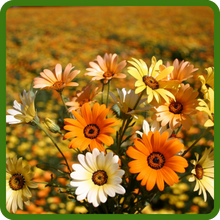
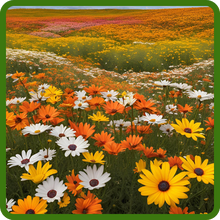
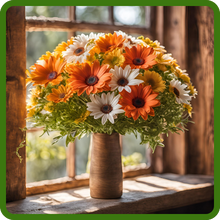
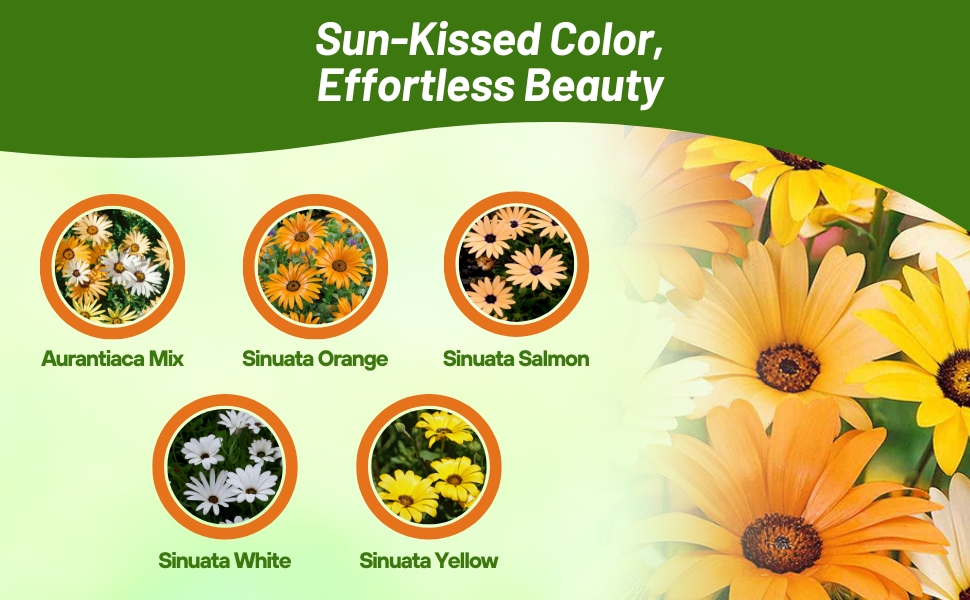
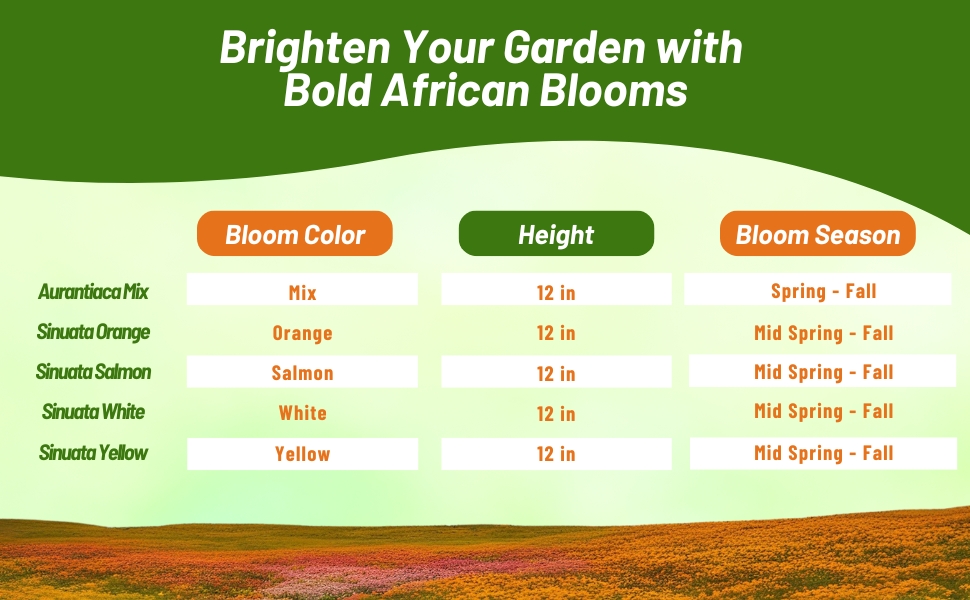
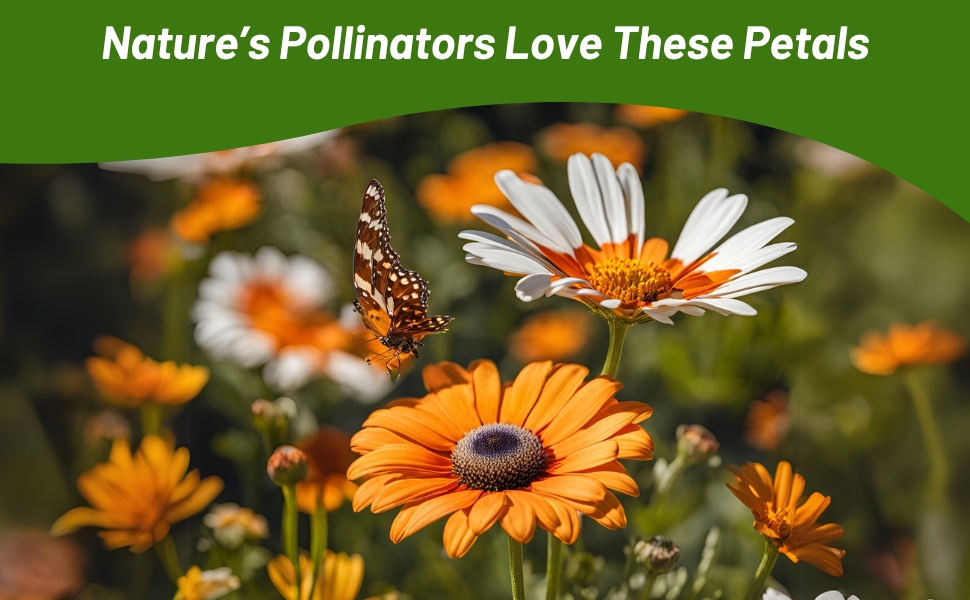
African Daisy (Dimorphotheca Sinuata Yellow) - African Daisy is also known as the Cape Marigold. It is easily grown from flower seeds, and it is one of the most colorful flowers for a beautiful garden. The plant is excellent for naturalized areas and as ground cover for large areas, for parking strips, borders, large pots and tubs. The flowers are 1-1/2 inch wide flowers, which close at night, in the shade, and during cloud cover. The flower colors are available in shades of white, orange, yellow and salmon. This variety is a gorgeous yellow.
The African daisy plant is exceptional for hot, sun-drenched landscapes. Like many of the plants in the daisy family from South Africa, it's tough enough to live in hot, dry conditions, but a good watering once or twice a week will keep the blooms vibrant. Sow seeds directly outdoors in early spring after frost season is completely over. Keep the flower seeds moist until germination. To prolong blooming, remove faded flowers.
Common Questions
Are African Daisies Perennial?
Whether African daisies return every year depends on the location where they are planted. In USDA hardiness zones 10-11, African daisies can grow as perennials, coming back each year. However, in colder regions falling within USDA hardiness zones 9 or lower, African daisies need to be planted annually, requiring replanting each year.
Do African daisies bloom all summer?
If planted in cooler summer environments, yes, African daises will bloom from spring to the next frost. If grown in a place that has very hot summers, African daises will only bloom from late spring until early summer, completely stopping their growth once the weather becomes hot and dry.
Planting Directions
TEMPERATURE
70F
AVERAGE GERM TIME
10 - 21 days
LIGHT REQUIRED
Yes
DEPTH
Seeds must be covered thinly, no more than the thickness of the seed
SOWING RATE
2 - 3 seeds per plant
MOISTURE
Keep seeds moist until germination
PLANT SPACING
12 - 16 inches
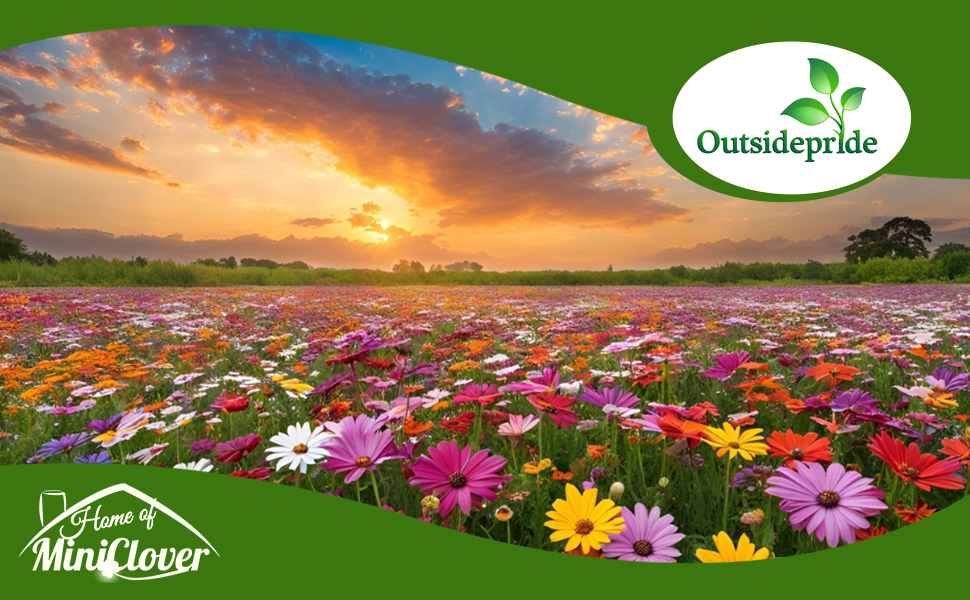
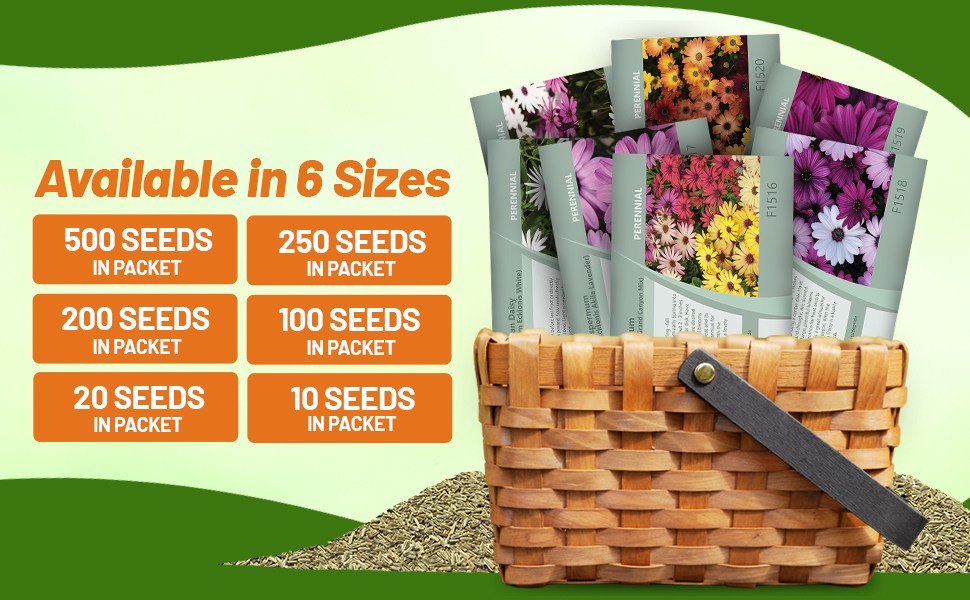
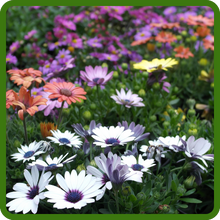
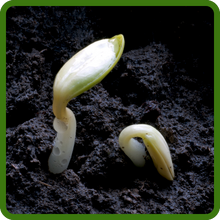
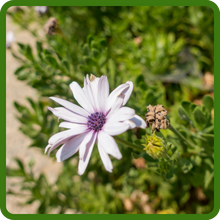
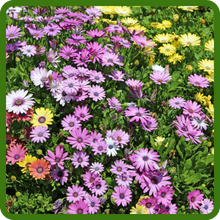
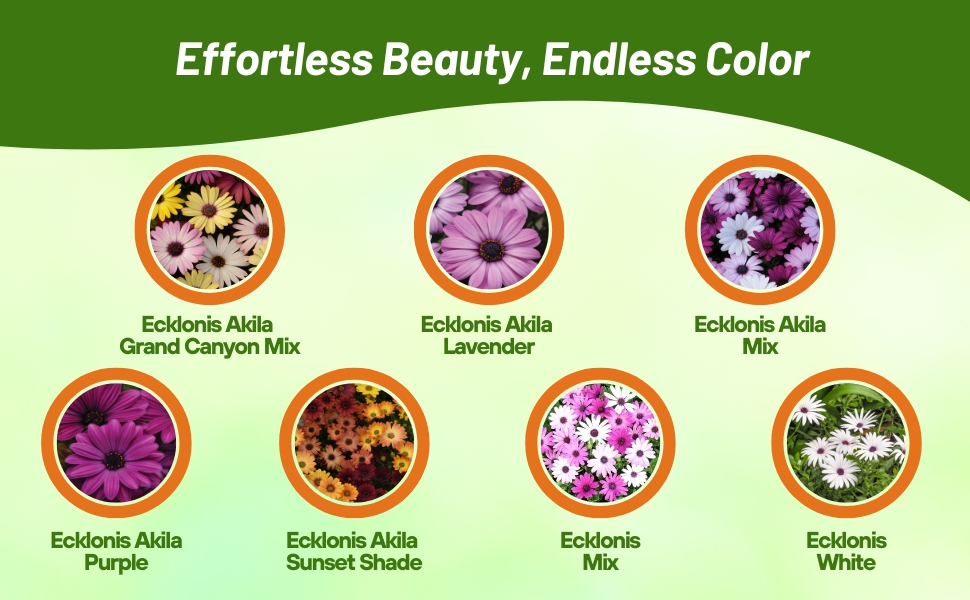
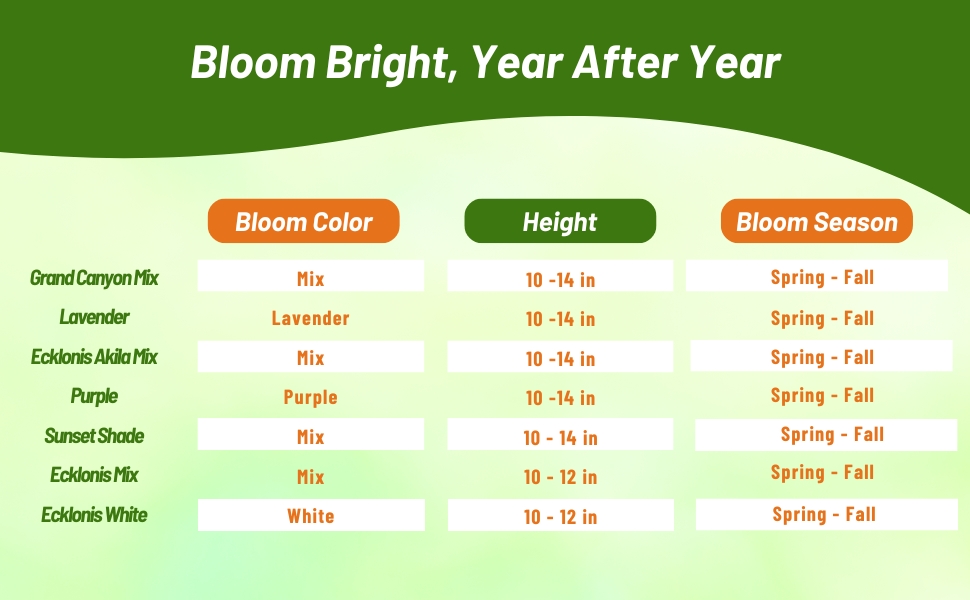
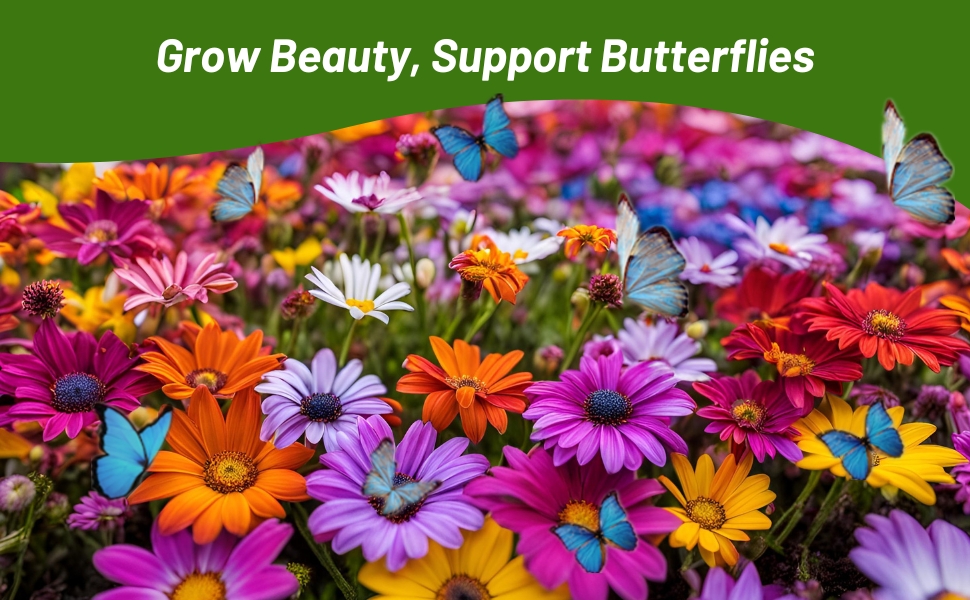
African Daisy (Osteospermum Ecklonis White) - African Daisy perennial flowers are grown from Osteospermum Ecklonis seeds. They are tender perennials but can easily be grown in cooler zones as an annual, and it's a quick and easy bloomer giving a wonderful display. The Osteospermum African Daisy blooms when the weather is cool, making them good color for early spring.
Common Questions
Are African Daisies Perennial?
Whether African daisies return every year depends on the location where they are planted. In USDA hardiness zones 10-11, African daisies can grow as perennials, coming back each year. However, in colder regions falling within USDA hardiness zones 9 or lower, African daisies need to be planted annually, requiring replanting each year.
Do African daisies bloom all summer?
If planted in cooler summer environments, yes, African daises will bloom from spring to the next frost. If grown in a place that has very hot summers, African daises will only bloom from late spring until early summer, completely stopping their growth once the weather becomes hot and dry.
Planting Directions
TEMPERATURE
70F
AVERAGE GERM TIME
10 - 21 days
LIGHT REQUIRED
Yes
DEPTH
Seeds must be covered thinly, no more than the thickness of the seed
SOWING RATE
2 - 3 seeds per plant
MOISTURE
Keep seeds moist until germination
PLANT SPACING
12 - 16 inches
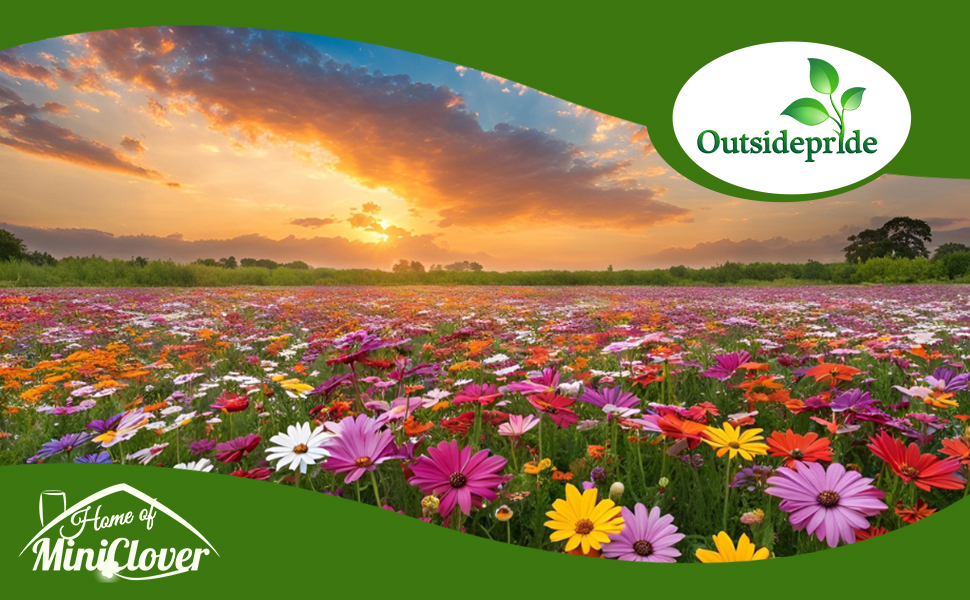
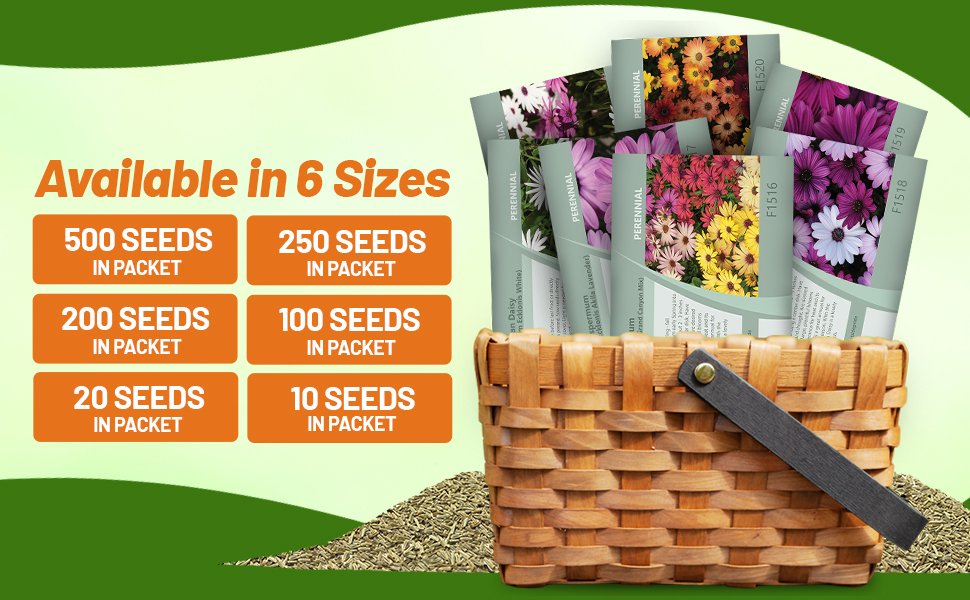
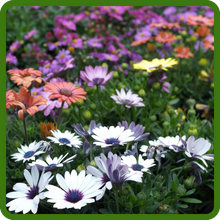
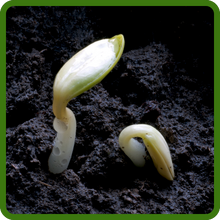
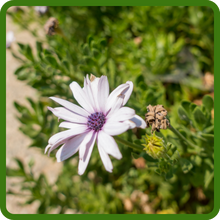
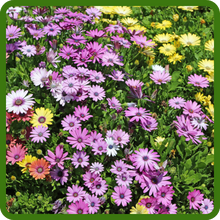
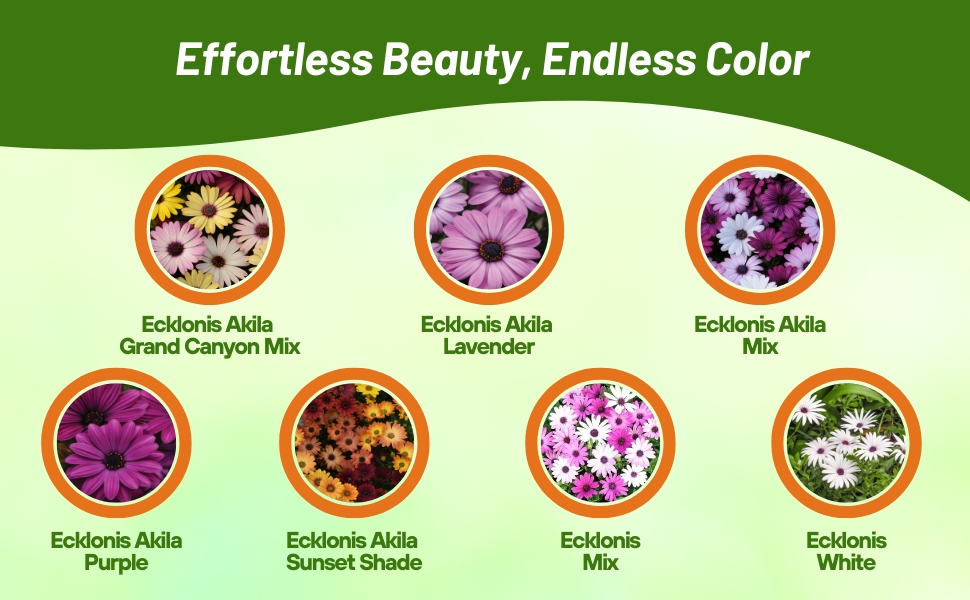
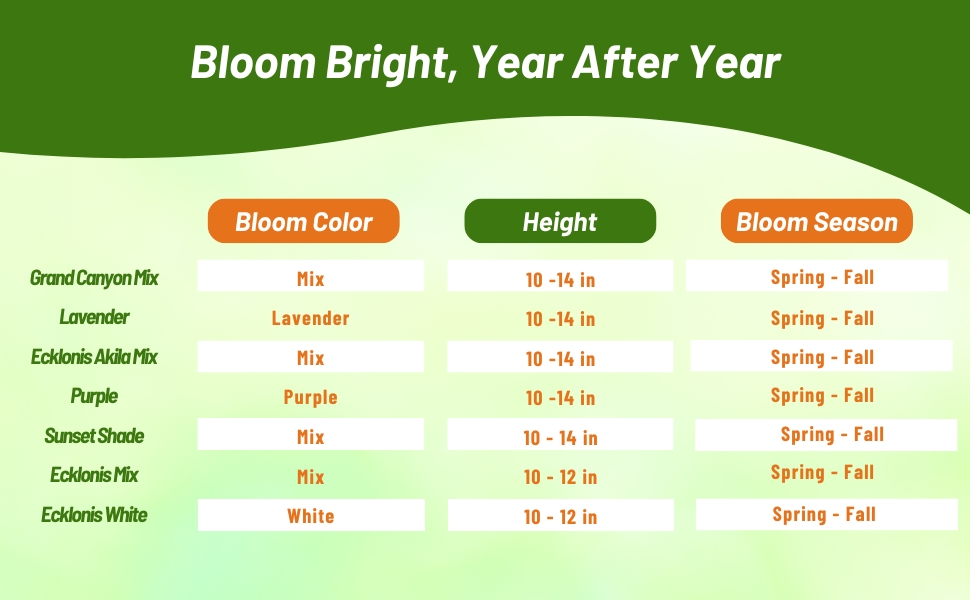
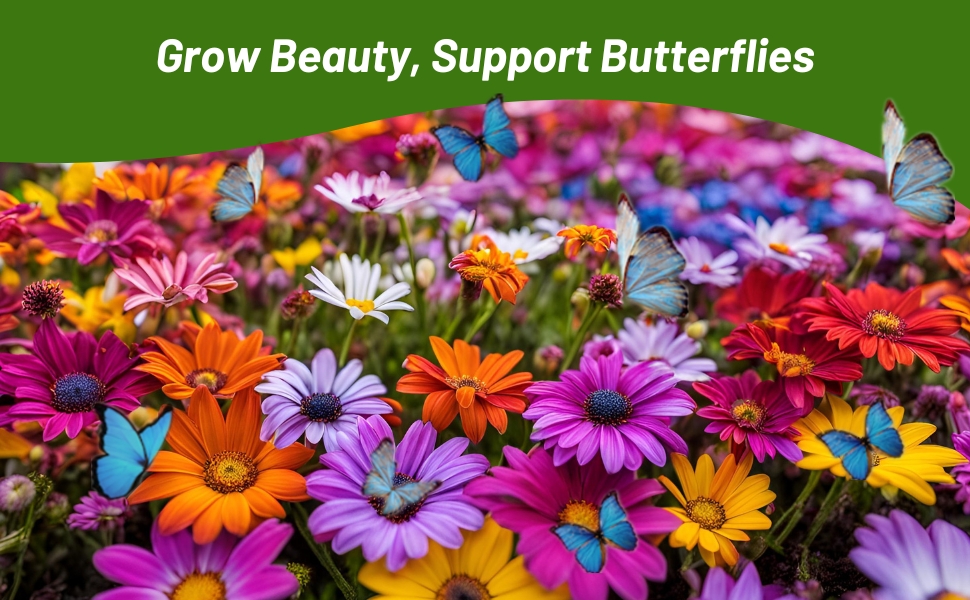
This African Daisy Mix is a tender perennial grown from Osteospermum seeds. They can easily be grown in cooler zones as an annual, and it's a quick and easy bloomer that gives a wonderful display. Drought tolerant Osteospermum African Daisy blooms when the weather is cool, making them a good color for early Spring. Only reaches 10 - 14 inches tall and 14 - 20 inches wide make it an excellent choice for the front of the border! Osteospermum Akila mix has 2 - 3 inch daisy-like flowers. These plants make an eye catching summer display in an open border, as ground cover or in containers. Flowers can be single or semi-double. "Akila Mix" is a lovely Osteospermum with loads of flowers, colors ranging from bright white, pink and purple and they all have coloured centers. In warm climates it will bloom from early Spring into Fall.
How to Grow Osteospermum seed
Sow African Daisy seeds indoors about 6 to 8 weeks before the last frost. Sprinkle seeds on top of soil and do not cover. Place in a cool, well-lit location. Do not use heat to germinate. Seedlings should emerge in about 2 weeks. Once seedlings are 2 - 3 inches high, transplant them into individual pots. After first frost, plant the seedlings in your garden. Space seedlings 12 - 18 inches apart.Common Questions
Are African Daisies Perennial?
Whether African daisies return every year depends on the location where they are planted. In USDA hardiness zones 10-11, African daisies can grow as perennials, coming back each year. However, in colder regions falling within USDA hardiness zones 9 or lower, African daisies need to be planted annually, requiring replanting each year.
Do African daisies bloom all summer?
If planted in cooler summer environments, yes, African daises will bloom from spring to the next frost. If grown in a place that has very hot summers, African daises will only bloom from late spring until early summer, completely stopping their growth once the weather becomes hot and dry.
Planting Directions
TEMPERATURE
70F
AVERAGE GERM TIME
10 - 21 days
LIGHT REQUIRED
Yes
DEPTH
Seeds must be covered thinly, no more than the thickness of the seed
SOWING RATE
2 - 3 seeds per plant
MOISTURE
Keep seeds moist until germination
PLANT SPACING
14 - 18 inches
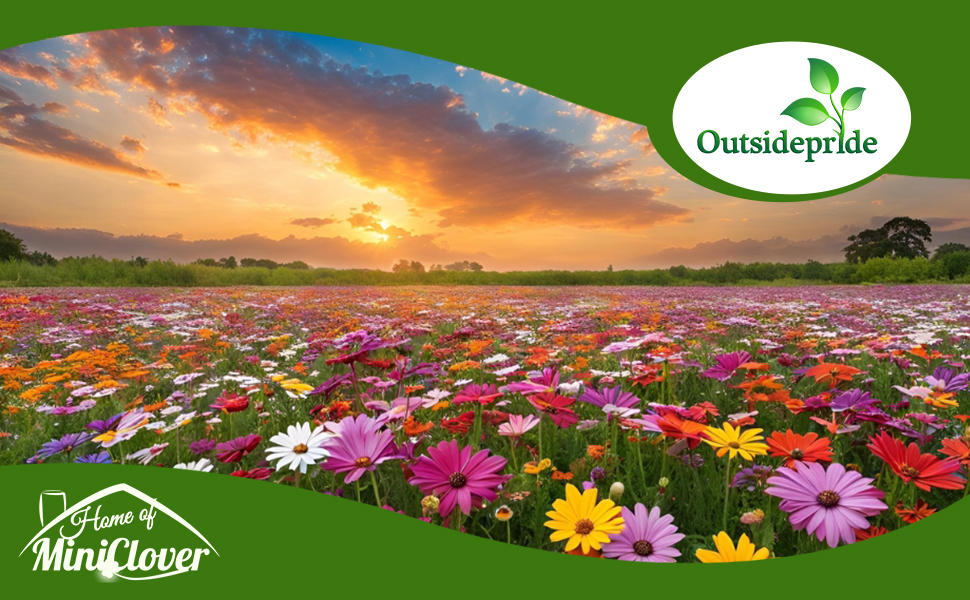
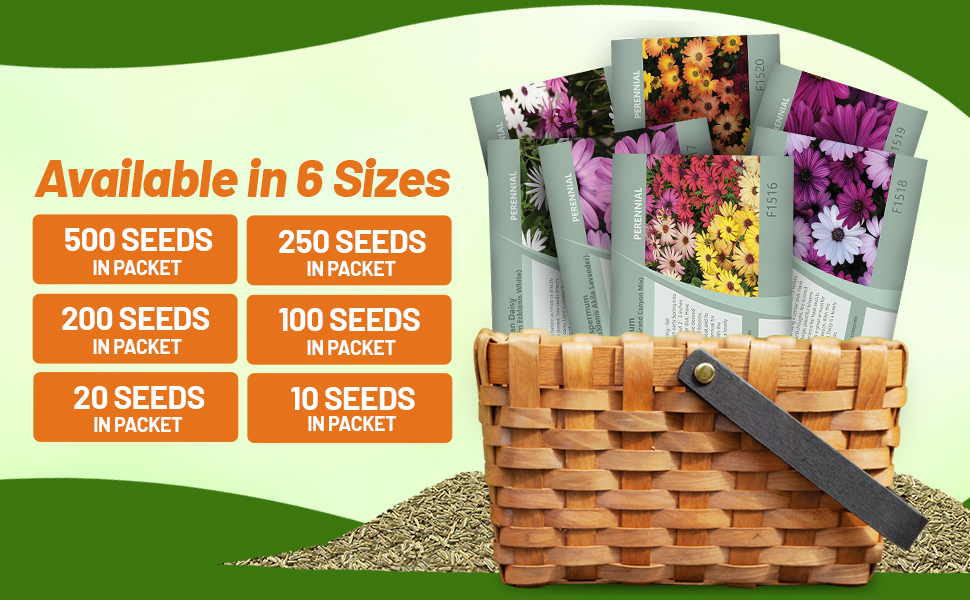
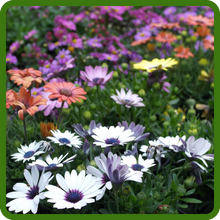
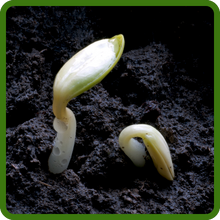
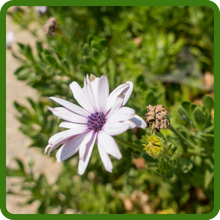
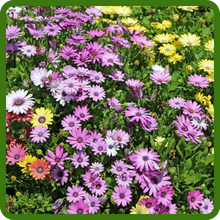
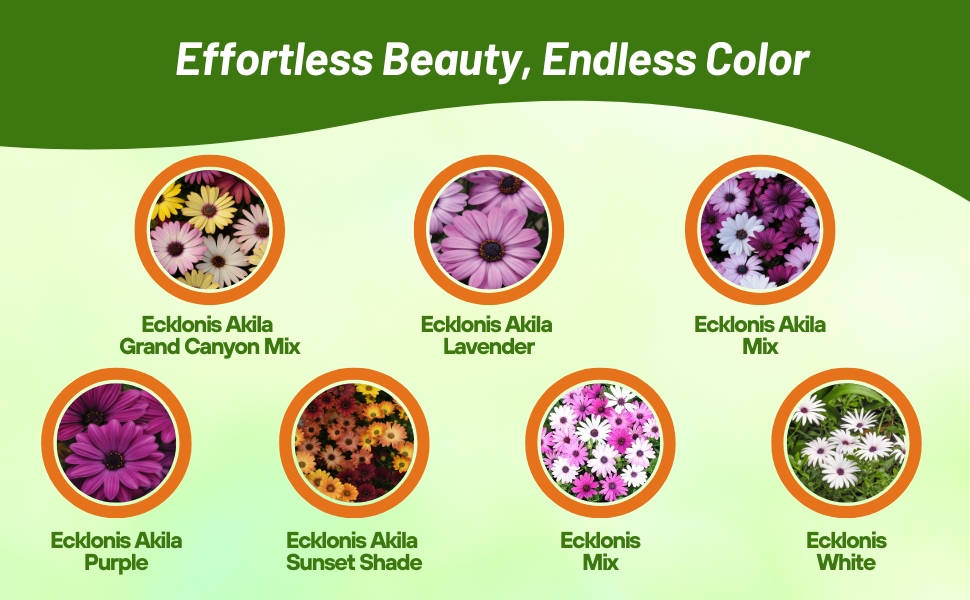
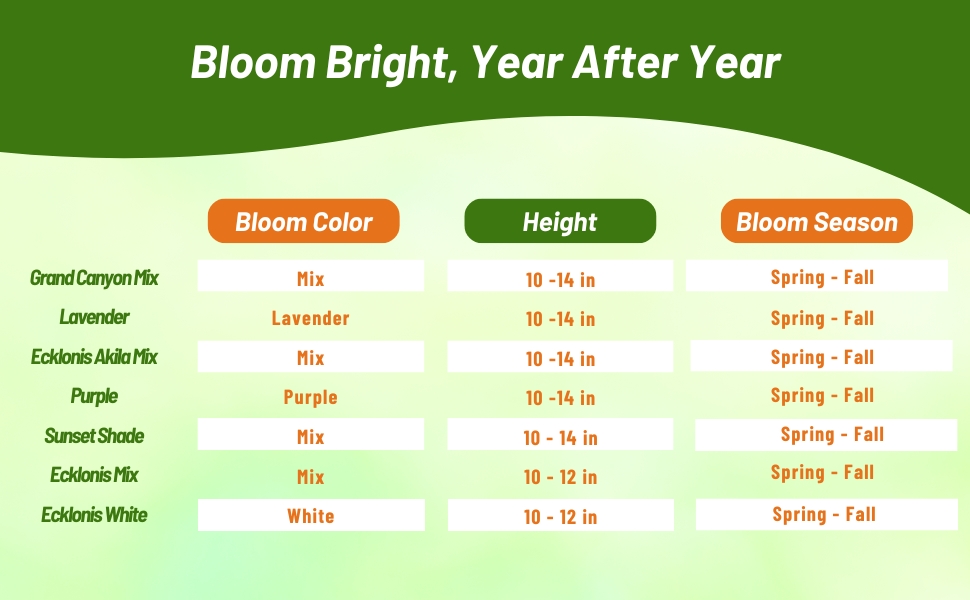
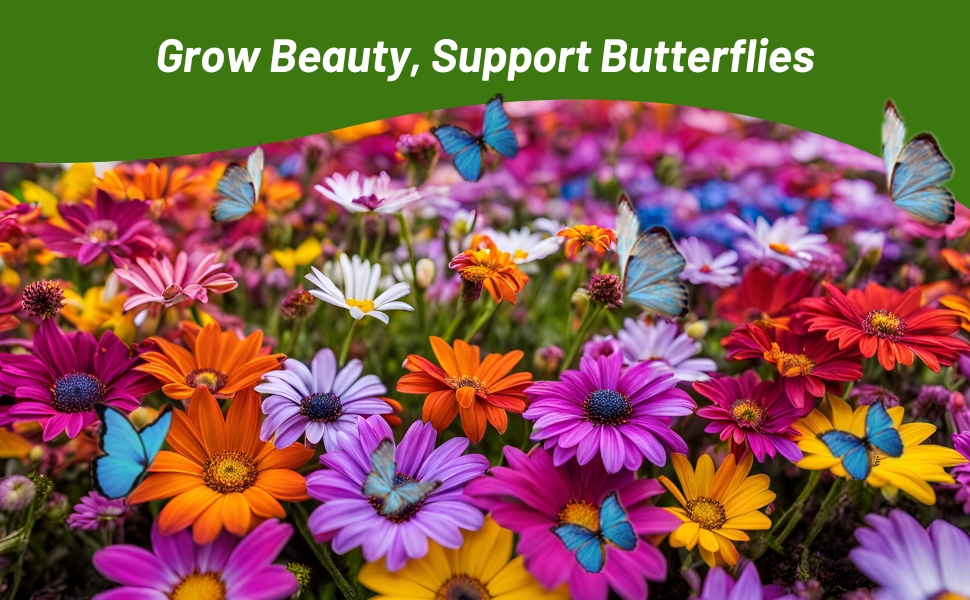
Osteospermum (Osteospermum Ecklonis Akila Grand Canyon Mix) - African Daisy tender perennial flowers are grown from Osteospermum Ecklonis seeds in USDA zones 9 - 10. They are tender perennials but can easily be grown in cooler zones as an annual, and it's a quick and easy bloomer giving a wonderful display. The Osteospermum African Daisy blooms when the weather is cool, making them good color for early Spring. Only reaches 10 - 14 inches tall and 14 - 20 inches wide make it an excellent choice for the front of the border.
Osteospermum Akila Grand Canyon Mix is a formulated blend of 2 - 3 inch daisy-like flowers in shades of cream, lavender, purple, rose-red, white, and yellow. In warm climates bloom from early Spring into Fall. Drought and heat tolerant plants.
Common Questions
Are African Daisies Perennial?
Whether African daisies return every year depends on the location where they are planted. In USDA hardiness zones 10-11, African daisies can grow as perennials, coming back each year. However, in colder regions falling within USDA hardiness zones 9 or lower, African daisies need to be planted annually, requiring replanting each year.
Do African daisies bloom all summer?
If planted in cooler summer environments, yes, African daises will bloom from spring to the next frost. If grown in a place that has very hot summers, African daises will only bloom from late spring until early summer, completely stopping their growth once the weather becomes hot and dry.
































